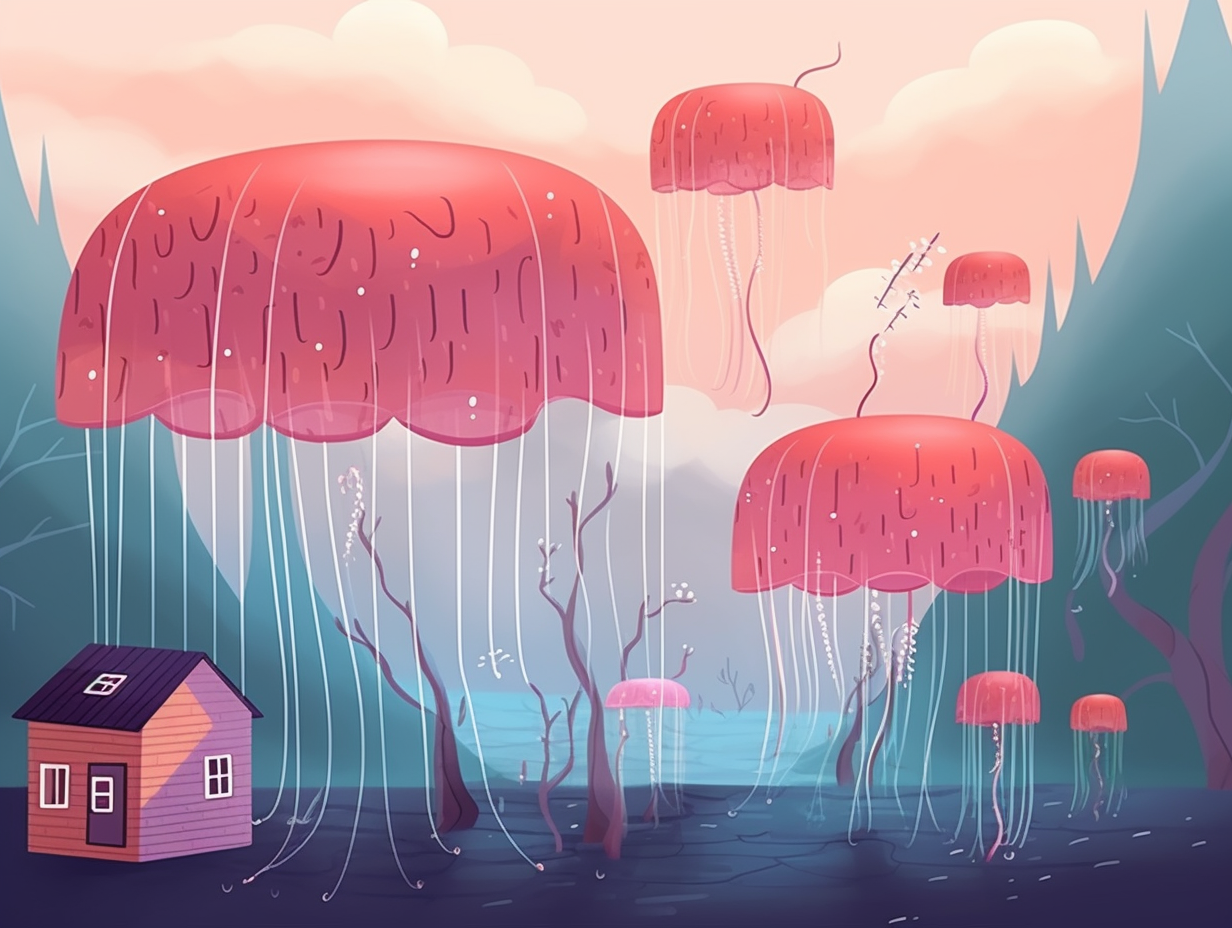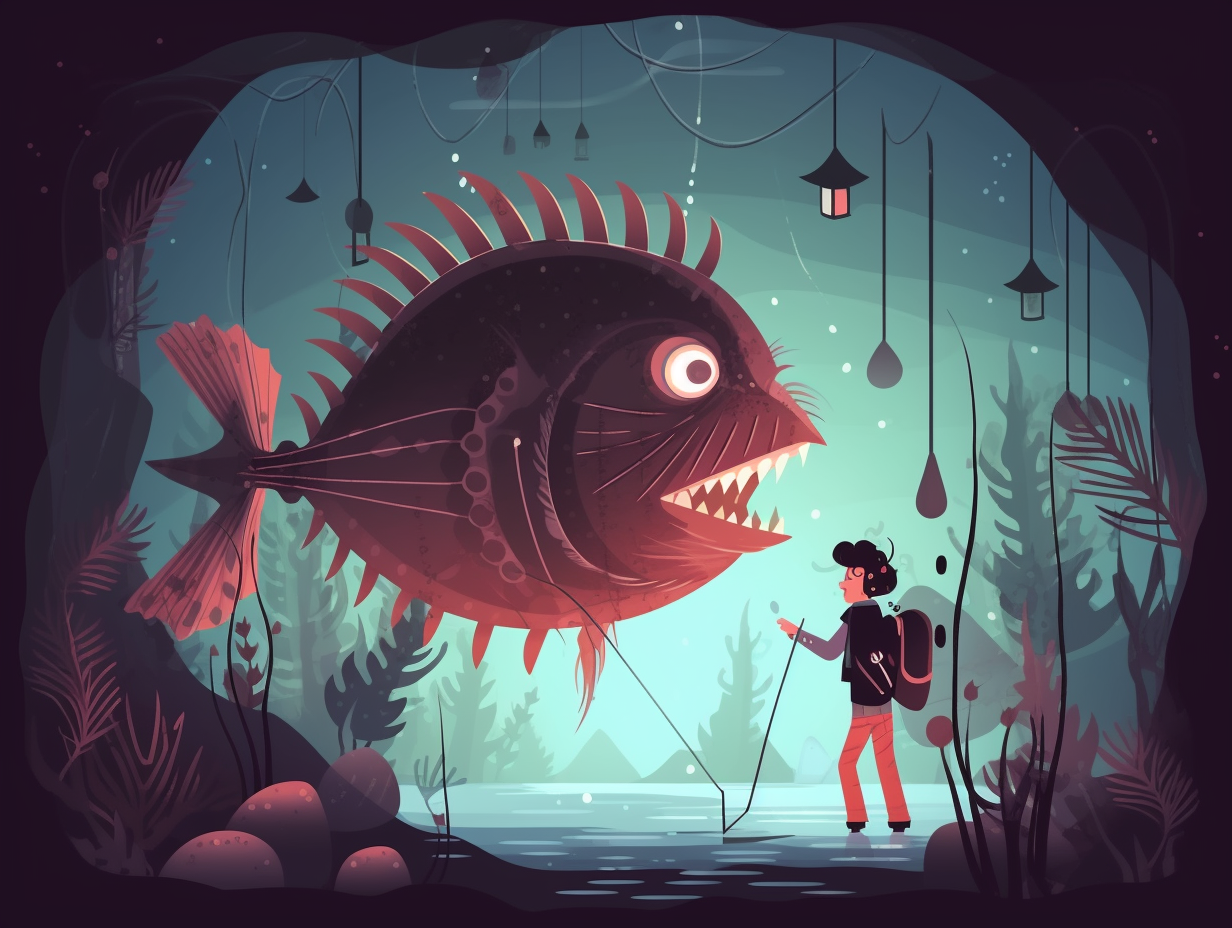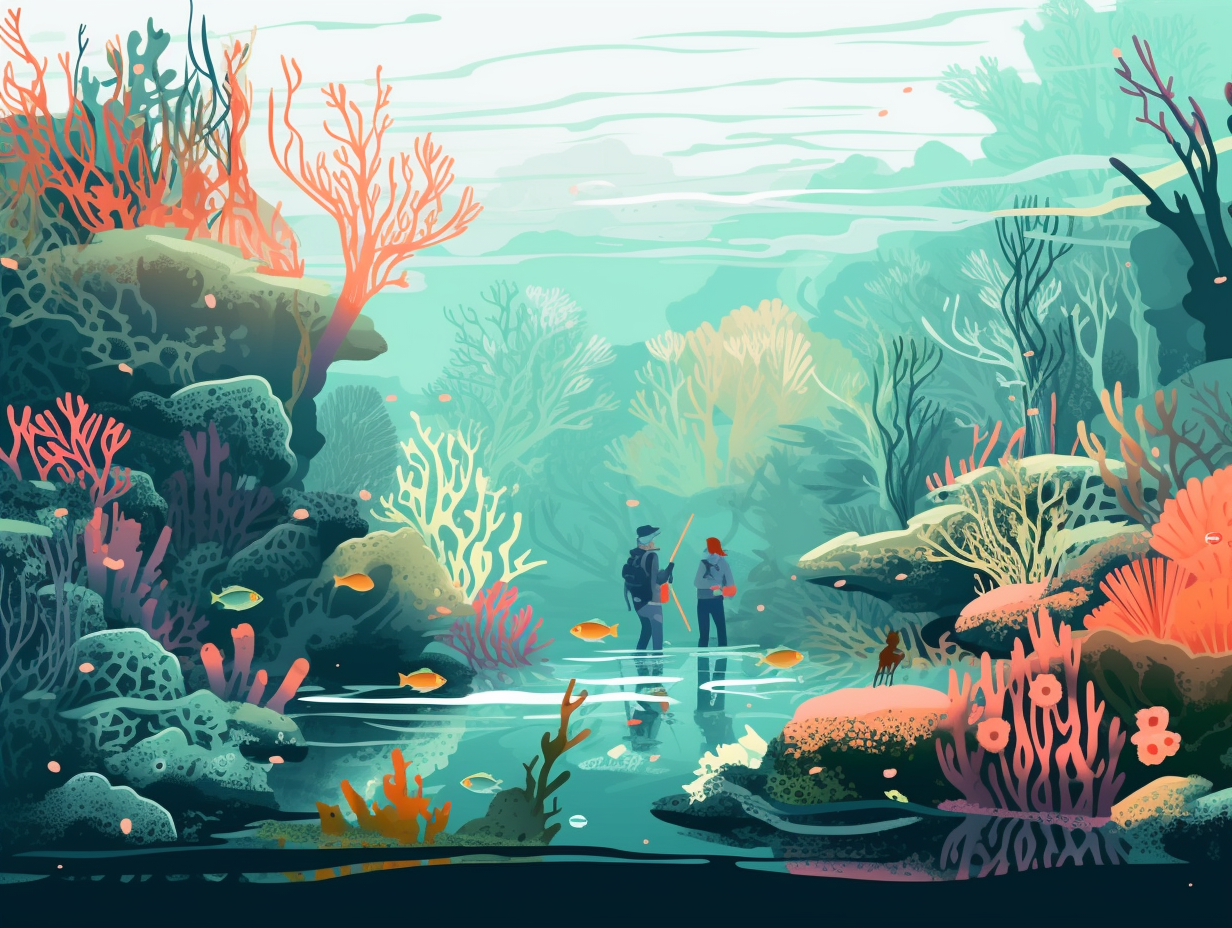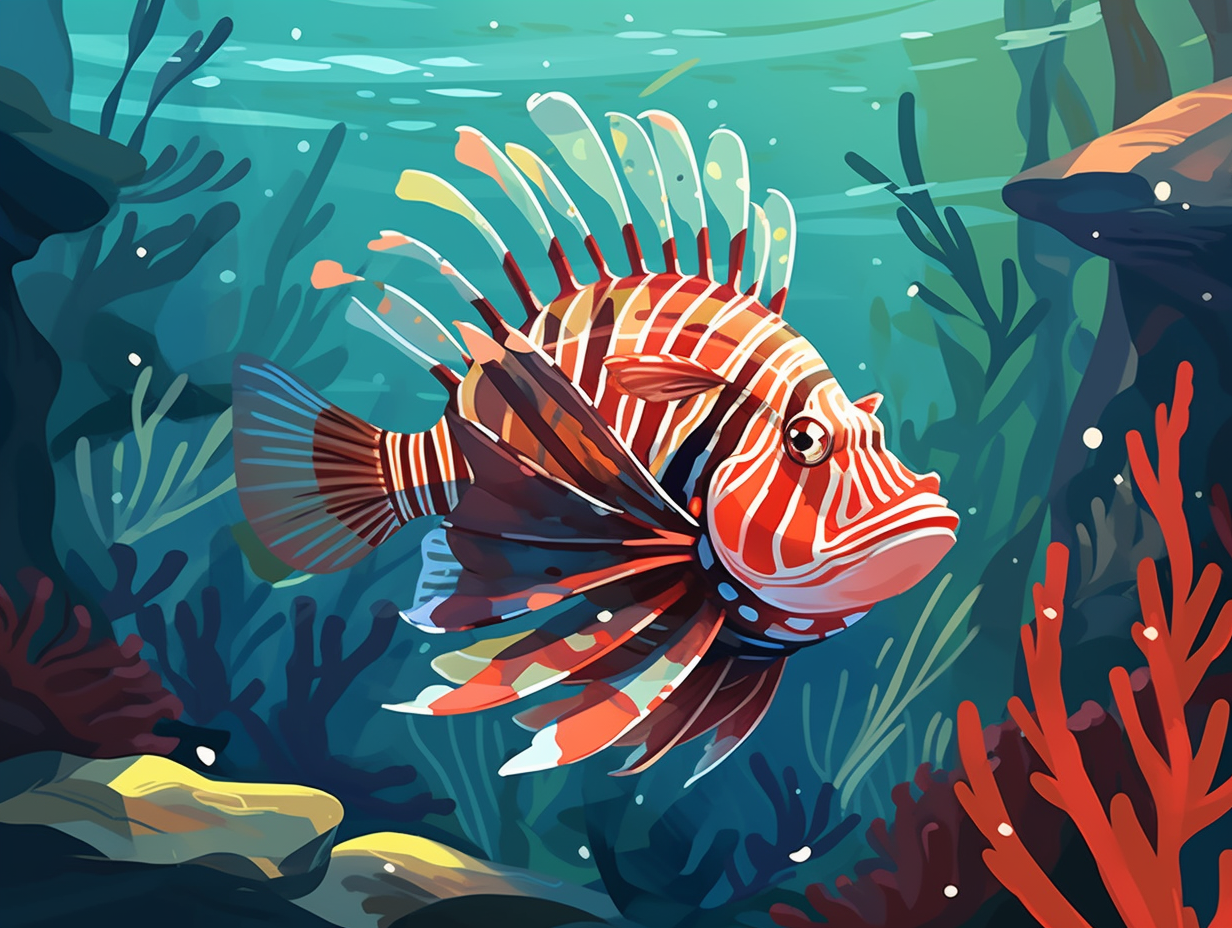Discover the Ocean's Mysteries: Top 25 Unbelievable Jellyfish Fun Facts You Need to Know!

1. Sultan of Slime's Fossil Legacy
Before checking into the Fossil Dating Game Show, Old-Man-Jelly was already slinkin' and stinkin' around the prehistoric seas, earning a spot as the 'Sultan of Slime': Jellyfish have been found in fossils that stretch back over 500 million years, with one prominent example discovered in Utah, a place that was once submerged underwater during the ancient Cambrian period. Thus, these squishy, graceful ocean boppers have been perfecting their floaty dance moves for eons!
Source => ocean.si.edu
2. Turritopsis' Time-Traveling Trick
Who needs a time machine when you're a jellyfish: Meet Turritopsis dohrnii, the master of transdifferentiation, with the ability to turn back its biological clock under stressful situations. This genius aquatic invertebrate can reset its cells, morphing into a ball of tissue and stem-cells, and become a genetically identical polyp as it touches down at the seafloor. They say age ain't nothing but a number, but for this jelly, it's also the greatest survival stunt known to science, potentially opening doors for advancements in cancer research and stem-cell mastery.
Source => parley.tv

Did you know moon jellyfish are the color-changing chameleons of the deep blue? Discover how their diet influences their fashionable hues and transparency!
=> Fun Facts about Moon-Jellyfish
3. Brain? Who Needs One Anyway!
Who needs brainpower anyway? Jellyfish are the aquatic world's village idiots, proving you don't need to be a rocket scientist to survive millions of years on this wacky planet: Despite lacking a brain, these squishy, gelatinous characters come equipped with two nervous systems allowing them to control swimming, perform complex functions, and adapt to their environment with impressive circadian rhythms.
Source => pbs.org
4. Clingy Ex: Jellyfish Edition
Ever heard of a clingy ex that just won't let go? Jellyfish take that to a whole new level: even when broken apart in rough waters, these Gelatinous heartbreakers release their potent and functional tentacles, causing burning itches, muscle cramps, and even chest tightness—all without making an appearance! But fear not, as meat tenderizer can swoop in to save the day by breaking down the venom's proteins and relieving that sting.
Source => blogs.ifas.ufl.edu

5. Moon Jelly's Limb Loss Geometry
For all those who feel like they didn't ace geometry class, take heart: the moon jellyfish have got you beat with their "divide and conquer" approach to limb loss! : These squishy sea critters can actually rearrange their remaining limbs to regain symmetry after losing a few, by contracting and relaxing their elastic body material until everything's well-spaced and functional for swimming and feeding, a strategy that might even inspire innovative materials or technologies.
Source => npr.org
6. Jellyfish's 500-million-year Family Reunion
Before you celebrate your grandparents' golden anniversary, consider this: jellyfish take the award for the longest family reunion! Yes, indeed: these spineless stunners have inhabited our planet for over 500 million years, making them one of the most ancient and highly-adaptable multi-organ animal species ever.
Source => en.wikipedia.org
7. Zombie Lifestyle Underwater
In a world where zombies are all the rage, jellyfish have been living the brainless lifestyle for eons: These gelatinous creatures navigate the seven seas without a brain, using a nerve net to sense their surroundings and respond to stimuli, while also possessing the impressive skill of regenerating lost limbs – talk about an immortal lifestyle hack!
Source => montereybayaquarium.org
8. Box Jelly, the Aquatic James Bond
Imagine box jellyfish cruising around as the James Bonds of the sea, sporting quick moves and fantastic vision to hunt their next martini – shaken, not stirred, fish, that is: These aquatic secret agents can swim up to four knots and possess advanced eyesight thanks to clusters of sophisticated eyes on each side of their box-shaped bodies, making them skilled hunters of small fish and shrimp.
Source => oceanservice.noaa.gov
9. Jellyfish: Nature's Fuel-Efficient Swimmers
Jellyfish: the ocean's thrifty commuters, putting even the most fuel-efficient cars to shame with their graceful, poetically economical swim strokes. Who knew marine life could inspire eco-friendly dreams? The big reveal: Jellyfish are the most energy-efficient swimmers in the sea, using less energy for their size than any other swimming animal, by manipulating the physics of water around their bodies, creating alternating zones of high and low pressure that propel them forward.
Source => scientificamerican.com

10. Irukandji: Undercover Ocean Assassins
Who knew that these seemingly innocent floating water balloons could pack quite a wallop? Irukandji jellyfish, despite their petite size, are more like undercover ocean assassins that would make James Bond proud: These stealthy creatures possess incredibly potent venom, causing a horrendous condition known as Irukandji syndrome, which includes muscle cramps, severe pain, and a spike in heart rate and blood pressure – definitely not on any diver's wish list! Remember, folks - these are not your friendly, neighborhood jellies, so stay safe and seek medical help if stung by one of these aquatic ninjas.
Source => en.wikipedia.org
11. Tripedalia: The Jellyfish Speedster
Step aside, Speedy Gonzales, there's a new underwater speedster in town: The recently discovered Tripedalia maipoensis, a box jellyfish species, uses flat pedal-shaped structures called "pedalia" to produce powerful thrusts and swim faster than its fellow jellyfish, boasting a 1.5 cm body length and three tentacles up to 10 cm long at each of its four corners, showcasing the fascinating marine life diversity in Hong Kong's Mai Po Nature Reserve.
Source => fox4news.com
12. Crunchy Jellyfish Salad: Chinese Cuisine
If finding Nemo has you prepared to try scaling aquatic dining experiences, look no further than this unexpectedly crunchy undersea delicacy: Jellyfish salad is a tasty dish in Chinese cuisine wherein salted jellyfish shreds are marinated in vinegar, sugar, soy sauce, and sesame oil, boiled briefly, and plunged into ice water for that perfect crunch – all before a chilled hour-long marination in the fridge to create a refreshing appetizer.
Source => thehongkongcookery.com
13. Cannibalistic Mnemiopsis Jellyfish
In the jellyfish world, it's a family affair—a morbid one: Adult Mnemiopsis leidyi jellyfish cannibalize their own larvae to survive during times of low food availability, gaining a nutrient boost that lasts them for several more weeks in the Baltic Sea.
Source => livescience.com
14. Disco Fever: Jellyfish Bioluminescence
Step aside, disco fever, because jellyfish have been lighting up the ocean floor way before groovy tunes even hit the airwaves: Some species boast bioluminescence, a natural, chemically-charged glow used for attracting prey, scaring off predators, and even communicating with fellow light-up sea creatures, earning them a coveted spot on the world's underwater tourist attraction list.
Source => kids.nationalgeographic.com

15. Lion's Mane: Glowing Ocean Giant
Aquatic ravers need not look further than their glowing underwater brethren: the lion's mane jellyfish is one of the largest jellyfish species in the world and has the fantastic ability to produce its own light, shining bright in the depths of the ocean.
Source => oceana.org
16. Irukandji: The Angler Jelly
Who needs to "catch more flies with honey" when you can simply evolve to be a jellyfish angler? Behold, the astonishing Irukandji box jellyfish: armed with tentacles stretching up to 1.2 meters and cleverly spaced nematocyst clusters, this crafty creature uses aggressive mimicry to lure and capture unsuspecting prey during daylight hours, while conserving energy at night. Truly, the ultimate fisher-jelly!
Source => planetsave.com
17. Moon Jelly's Snot Rocket Feast
Hey plankton, watch out for snot rockets from above! Moon jellyfish are ready to capture you with a booger-y surprise: They cover their gooey bells with a layer of mucus that traps tiny microscopic plankton, then wrangle them into their mouths with specialized tentacles for a slimy smorgasbord.
Source => wildlifetrusts.org
18. Jellyfish Roommates: Algae Cookout
It's a mutually beneficial underwater roommate situation that puts even the best episode of Friends to shame: In Palau's Jellyfish Lake, Mastigias jellyfish are always equipped with their very own in-house chefs, the zooxanthellae algae, which convert carbon dioxide and sunlight into tasty carbs for their jelly companions to enjoy.
Source => whoi.edu
19. Balancing Jelly Bloom Problems
Feeling a little jelly in all the wrong places: Jellyfish blooms disrupt fishing operations, negatively impacting profits and jobs, but sometimes benefit fisheries by chowing down on pesky competitors. Harvesting these squishy invaders has found mild success in Asia, though it can occasionally put a damper on the aquaculture industry.
Source => en.wikipedia.org
20. Turritopsis: Immortal Jellyfish Secrets
Who needs the Fountain of Youth when you've got Turritopsis dohrnii in your corner? This elusive sea wizard has a few tricks up its tentacles to defy Father Time: Also known as the "immortal jellyfish," it can revert back to its juvenile stage after reaching sexual maturity, making it the only known species capable of reversing its aging process. Pulling this Benjamin Button-esque move, the jellyfish can potentially live an indefinite lifespan by reverting to its polyp stage and starting the process over again.
Source => smithsonianmag.com
21. Jellyfish: Cloning in the Dating Game
Who needs Tinder when you've got a built-in splitter? Well, jellyfish, for starters: Some species can actually clone themselves by splitting in half, a process known as binary fission, eliminating the need for finding a mate and allowing them to quickly boost their population numbers.
Source => montereybayaquarium.org
22. Irukandji Syndrome: Tiny But Deadly
Talk about a small package with a big punch: the Irukandji jellyfish, with a bell only 5 to 25 millimeters wide and gangly tentacles, delivers venom that can cause Irukandji syndrome, leading to excruciating muscle cramps, severe back and kidney pain, and potentially fatal brain hemorrhages.
Source => en.wikipedia.org
23. Brainless, Heartless, but Still Stinging
If you thought jellyfish were just blubbering around with their heads in the clouds (or rather, the ocean), you’d be absolutely right: Jellyfish actually lack brains, blood, and hearts, boasting a body composed of a whopping 95% water and a basic nervous system called a nerve net that allows them to sense light and respond to stimuli, so their tentacles still sting, but mostly only leave a mark on your ego.
Source => oceanservice.noaa.gov
24. Box Jelly: Live Fast, Sting Hard!
Here's a deadly twist on the saying "live fast, die young": the Box Jellyfish, an aquatic daredevil with killer charm, takes this motto to heart, swapping good looks for a lethal touch: In its brief, one-year lifespan, this sea-dwelling bad boy can grow up to 10 feet long and wide, boasting 15 10-inch tentacles laden with 5,000 stinging cells each - their touch being a deadly combination of excruciating pain, potential demise, and gnarly scarring for any survivors.
Source => americanoceans.org
25. Portuguese Man o' War: Rave or Pain?
Don't be fooled by its rave-like appearance – the Portuguese man o' war is not here to party, and it's not even a jellyfish: Instead, it's a siphonophore with tentacles extending up to 165 feet that immobilize prey using venomous nematocysts, making for painful encounters with humans, though rarely fatal – and remember, drowning the pain with alcohol is a no-go in this case!
Source => keybiscayne.fl.gov
Related Fun Facts




















